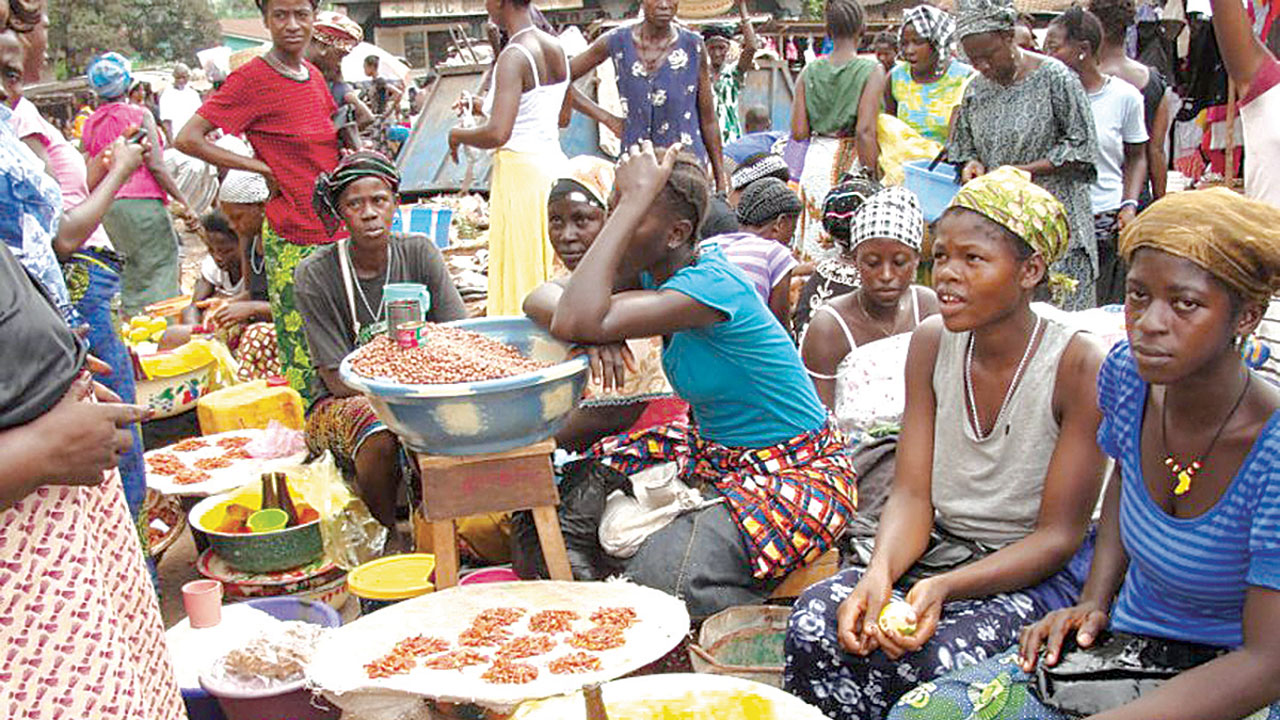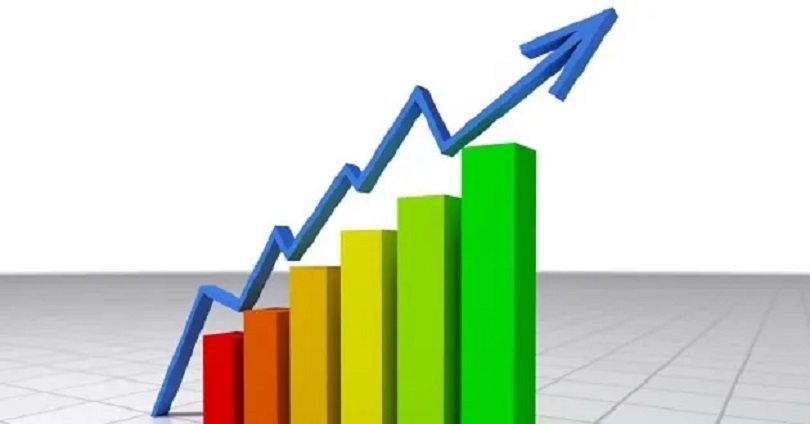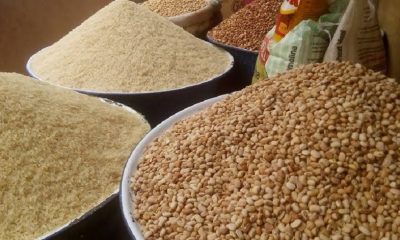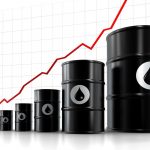Economy
Global Food Prices Jump 11th Consecutive Month in April

By Adedapo Adesanya
The prices of food commodity globally rose for the 11th consecutive month in April 2021, led by sugar, oil, and meat, the Food and Agriculture Organisation of the United Nations (FAO) has said.
The FAO said this in its Food Price Index report released on Thursday. The index tracks international prices of most commonly traded food commodities.
The FAO Food Price Index averaged 120.9 points in April, 1.7 per cent higher than March 2021 and 30.8 per cent higher than the same period of last year.
“The increase marked the 11th conservative monthly rise in the value of the FAO Food Price Index to its highest level since May 2014.
“And in nominal terms is 12 per cent below its all-time peak in February 2011,” it said.
The FAO Sugar Price Index increased 39 per cent from March and reached levels nearly 60 per cent above those registered in the corresponding month last year.
“The April rebound in international sugar price quotations was prompted by strong buying amid heightened concerns over tighter global supplies in 2020/21, due to the slow harvest progress in Brazil and frost damage in France.
“Further support was provided by the strengthening of the Brazilian Real against the US Dollar, which tends to affect shipments from Brazil, the world’s largest sugar exporter.
According to the report, the FAO Vegetable Oil Price Index averaged 162.0 points in April, up 1.8 per cent month-on-month, driven by rising soy, rapeseed and palm oil quotations more than offsetting lower sunflower oil values.
“International palm oil prices continued to rise in April on concerns over slower-than-expected production growth in major exporting countries.
“Soy and rapeseed oil values climbed further too, underpinned by respectively, firm global demand, including from biodiesel producers and protracted global supply tightness.
“By contrast, international prices of sunflower oil contracted moderately on-demand rationing,” it said.
In the report, the FAO Meat Price Index averaged 101.8 points in April, up 1.7 per cent from the slightly revised value for March, marking a seventh consecutive monthly increase and raising the index by 5.1 per cent above the corresponding month last year.
“In April, bovine and ovine meat quotations rose, underpinned by solid demand from East Asia, amidst tight supplies from Oceania due to ongoing herd rebuilding and low inventories.
“Elevated internal sales in some producing regions also supported bovine and ovine meat prices.
“Pig meat quotations firmed on continued high purchases by East Asia, despite increased overall shipments from the European Union, while Germany continued with no access to the Chinese market over African swine fever concerns.
“Meanwhile, poultry meat prices remained steady, reflecting generally balanced global markets,” the report said.
The report said the FAO Cereal Price Index averaged 125.1 points in April, up 1.2 per cent from March, resuming its climb after a short-lived one-month respite in March, and stood 26 per cent above its April 2020 level.
“Maize prices rose 5.7 per cent in April.
“With overall tightening maize supplies, on top of continued strong demand, maize prices stood 66.7 per cent above their values one year earlier and remain at their highest level since mid-2013.
“Among other coarse grains, international barley and sorghum prices continued to soften, falling 1.2 and 1.0 per cent in April but remained 26.8 and 86.5 per cent above their respective values in the corresponding month last year,” it said.
International wheat prices were generally steady in April, remaining over 17 per cent above their April 2020 values.
“By contrast, international rice prices decreased again in April, mainly reflecting currency movements and slow trading activities, with persistent logistical constraints and freight costs continuing to hinder fresh deals,” it said.
The report said the FAO Dairy Price Index averaged 118.9 points in April, up 1.2 per cent from March, rising for the eleventh consecutive month and lifting the index 24.1 per cent above its value a year ago.
“In April, butter quotations rose, underpinned by solid import demand from Asia, notwithstanding weaker internal demand in Europe.
“Skim milk powder prices increased due to high import demand from East Asia, induced partly by concerns over potential shipping delays amid limited spot supplies from Europe and Oceania.
“Cheese prices also increased due to high demand from Asia, amid lower-than-expected production in Europe and seasonally declining supplies from Oceania.
“By contrast, quotations for whole milk powder declined slightly, reflecting lower import demand for the available supplies, following significantly high volumes traded recently,” it said.
Economy
PenCom Extends Deadline for Pension Recapitalisation to June 2027

By Aduragbemi Omiyale
The deadline for the recapitalisation of the Nigerian pension industry has been extended by six months to June 2027 from December 2026.
This extension was approved by the National Pension Commission (PenCom), the agency, which regulates the sector in the country.
Addressing newsmen on Thursday in Lagos, the Director-General of PenCom, Ms Omolola Oloworaran, explained that the shift in deadline was to give operators more time to boost the capital base, dismissing speculations that the exercise had been suspended.
“The recapitalisation has not been suspended. We have communicated the requirements to the Pension Fund Administrators (PFAs), and we expect every operator to be compliant by June 2027. Anyone who is not compliant by then will lose their licence,” Ms Oloworaran told journalists.
She added that, “From a regulatory standpoint, our major challenge is ensuring compliance. We are working with ICPC, labour and the TUC to ensure employers remit pension contributions for their employees.”
The DG noted that engagements with industry operators indicated broad acceptance of the policy, with many PFAs already taking steps to raise additional capital or explore mergers and acquisitions.
“You may see some mergers and acquisitions in the industry, but what is clear is that the recapitalisation exercise is on track and the industry agrees with us,” she stated.
PenCom wants the PFAs to increase their capital base and has created three categories, with the first consists operators with Assets Under Management of N500 billion and above. They are expected to have a minimum capital of N20 billion and one per cent of AUM above N500 billion.
The second category has PFAs with AUM below N500 billion, which must have at least N20 billion as capital base.
The last segment comprises special-purpose PFAs such as NPF Pensions Limited, whose minimum capital was pegged at N30 billion, and the Nigerian University Pension Management Company Limited, whose minimum capital was fixed at N20 billion.
Economy
Three Securities Sink NASD Exchange by 0.68%

By Adedapo Adesanya
Three securities weakened the NASD Over-the-Counter (OTC) Securities Exchange by 0.68 per cent on Thursday, December 18.
According to data, Central Securities Clearing System (CSCS) Plc led the losers’ group after it slipped by N2.87 to N36.78 per share from N39.65 per share, Golden Capital Plc depreciated by 77 Kobo to end at N6.98 per unit versus the previous day’s N7.77 per unit, and FrieslandCampina Wamco Nigeria Plc dropped 19 Kobo to sell at N60.00 per share versus Wednesday’s closing price of N60.19 per share.
At the close of business, the market capitalisation lost N16.81 billion to finish at N2.147 billion compared with the preceding session’s N2.164 trillion, and the NASD Unlisted Security Index (NSI) declined by 24.76 points to 3,589.88 points from 3,614.64 points.
Yesterday, the volume of securities bought and sold increased by 49.3 per cent to 30.5 million units from 20.4 million units, the value of securities surged by 211.8 per cent to N225.1 million from N72.2 million, and the number of deals jumped by 33.3 per cent to 28 deals from 21 deals.
Infrastructure Credit Guarantee Company (InfraCredit) Plc remained the most traded stock by value with a year-to-date sale of 5.8 billion units valued at N16.4 billion, followed by Okitipupa Plc with 178.9 million units transacted for N9.5 billion, and MRS Oil Plc with 36.1 million units worth N4.9 billion.
Similarly, InfraCredit Plc ended as the most traded stock by volume on a year-to-date basis with 5.8 billion units traded for N16.4 billion, trailed by Industrial and General Insurance (IGI) Plc with 1.2 billion units sold for N420.7 million, and Impresit Bakolori Plc with 536.9 million units exchanged for N524.9 million.
Economy
NGX Index Crosses 150,000 points as Market Cap Nears N96trn

By Dipo Olowookere
The All-Share Index (ASI) of the Nigerian Exchange (NGX) Limited has again crossed the 150,000-point threshold on Thursday as the demand of for local intensifies.
The market was up by 0.35 per cent during the session, with the NGX index inching higher by 520.23 points to 150,363.05 points from the previous day’s 149,842.82 points and the market capitalisation climbed by N332 billion to N95.857 trillion from N95.525 trillion.
During the session, the consumer goods index grew by 1.23 per cent, the banking counter expanded by 0.56 per cent, and the energy sector appreciated by 0.05 per cent.
However, the insurance industry went down by 0.23 per cent, while the commodity and the industrial goods sectors closed flat.
Nestle Nigeria gained 10.00 per cent to trade at N1,958.00, Guinness Nigeria improved by 9.98 per cent to N289.70, Aluminium Extrusion Industries rose by 9.76 per cent to N11.25, DAAR Communications soared by 9.20 per cent to 95 Kobo, and Mecure Industries surged by 9.13 per cent to N55.00.
On the flip side, Stanbic IBTC lost 9.33 per cent to settle at N95.20, Lasaco Assurance went down by 9.09 per cent to N2.50, Africa Prudential slipped by 8.82 per cent, Austin Laz depreciated by 8.82 per cent to N12.40, and Sterling Holdings crashed by 6.12 per cent to N6.90.
There were 35 price gainers and 26 price losers yesterday, implying a positive market breadth index and bullish investor sentiment.
During the session, a total of 839.8 million equities valued at N32.8 billion exchanged hands in 23,211 deals compared with the 5.9 billion equities worth N216.2 billion traded in 25,205 deals a day earlier, indicating a decline in the trading volume, value, and number of deals by 85.77 per cent, 84.83 per cent, and 7.91 per cent apiece.
The day’s busiest stock was First Holdco with a turnover of 385.6 million units sold for N15.6 billion, FCMB traded 76.0 million units worth N805.3 million, Lasaco Assurance exchanged 43.6 million units valued at N111.8 million, Access Holdings transacted 29.6 million units worth N616.8 million, and Chams sold 24.8 million units valued at N75.4 million.
-

 Feature/OPED6 years ago
Feature/OPED6 years agoDavos was Different this year
-
Travel/Tourism9 years ago
Lagos Seals Western Lodge Hotel In Ikorodu
-

 Showbiz3 years ago
Showbiz3 years agoEstranged Lover Releases Videos of Empress Njamah Bathing
-

 Banking7 years ago
Banking7 years agoSort Codes of GTBank Branches in Nigeria
-

 Economy3 years ago
Economy3 years agoSubsidy Removal: CNG at N130 Per Litre Cheaper Than Petrol—IPMAN
-

 Banking3 years ago
Banking3 years agoFirst Bank Announces Planned Downtime
-

 Banking3 years ago
Banking3 years agoSort Codes of UBA Branches in Nigeria
-

 Sports3 years ago
Sports3 years agoHighest Paid Nigerian Footballer – How Much Do Nigerian Footballers Earn




















